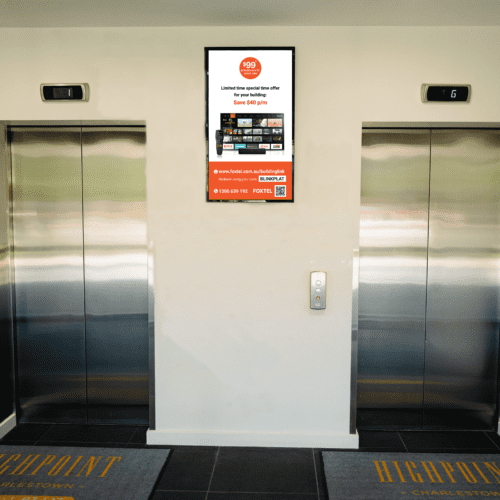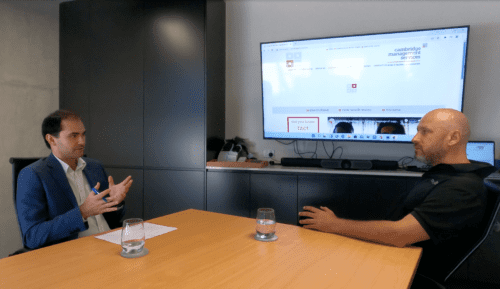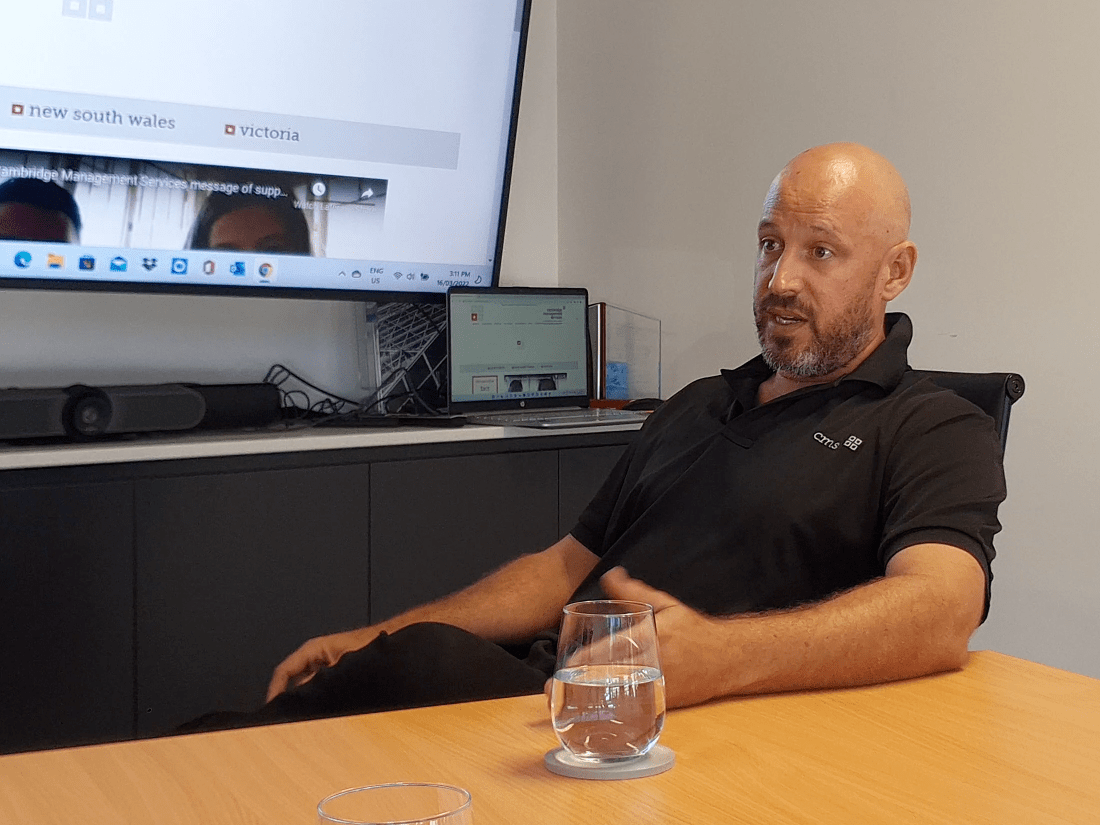Julian Morton, Business Director for Cambridge Management Services (CMS) in Newcastle, joins us to talk about how BuildingLink and PLM are being utilised to help build community spirit and cohesion across their strata.
CMS manages 12 buildings with around 2,000 apartments across all of their assets in Newcastle, NSW. The limited company began its journey in 2001 as a family-run Strata Management business, located in Hope Island Queensland. From these humble beginnings, they have grown to include five other locations across NSW, VIC and the ACT, while still retaining their family values.
More than a finance and property management business, CMS builds vibrant, safe, and friendly communities that people want to be a part of. Being early adopters of technologies that support their vision and values is a large part of their success.
Julian, CMS has been one of the early adopters of BuildingLink and screens in your residential buildings, can you tell us a little about why this was and the feedback you’ve had about these screens?
One of the reasons why we’re really keen on the concept and the screens is that a lot of the people who live in our assets are also early adopters of technology. Whether they be old or young, we drive, through the platform, all of our communications. That way, people have a genuine understanding of the platform and how it relates to the screens – be that updates or real-time information that they need to be aware of in the short, medium, or long term.
We can feed that information from the head office, through to the assets that we manage in and around Newcastle. And, as our assets and portfolio grow, we will be able to communicate in real-time from a central place. This is what we think is really key to our remote modeling as opposed to full-time building management. We’re looking at that, as well as part-time management and from that perspective, it’s just a really great tool to communicate with.

You mentioned the remote and part-time management models, how successful has that been?
It’s been great, just great. With Newcastle, in particular, with the town growing into a city, there are a lot of high-density apartments coming to market. A lot of people don’t quite understand whether it be strata, facilities and/or building management. This is a great way to grow a business in an organic way with smaller remote management models that are genuinely effective.
There can be eyes and ears on-site through cleaners, committee members, and various communicative occupants and tenants – it’s just a great way to get information in real-time – as well as specific information. So, if you’ve got ropes cleaners coming down that need to change due to weather, perfect because we can say “canceled and coming in on this date” and that feeds directly in real-time for us to the building’s screens.

With the building technology, we’ve put a lot of R&D into the app, going the way of the smartphone rather than the desk and logging on through a PC. How do you find the uptake of the BuildingLink app with your downsized management models?
Yeah, good, good. Once residents get past the non-traditional way of managing, once they see the ease of the way the app is navigated and the benefits derived from it, essentially they become the best adopters of the technology because they use it implicitly.
They communicate up, to us, and let us know how they want their messages sent – by text, email, the screens – and we can cater to the communication they desire. That way, we get a lot of people responding to one communication as opposed to a traditional, say noticeboard, where you have to rely on people walking past, locking an eyeball on it, reading it, comprehending it, and actioning it.
A lot of the time, people are already in that smartphone headspace already, so this just feeds directly into the way that the majority of people are already getting their information nowadays.

In terms of your staff, Julian, do you find the technology channels a lot of inquiries through one channel as opposed to, emails, phone calls, door knocks? Are there time efficiencies that you can create through the technology?
Yes definitely, and we’re also working on that. I think a lot of our building managers are still beholden to the email trail and that’s also the nature of both strata and the industry as it changes. And it’s also accountability, right?
So people need to know an inquiry has been received, actioned, and closed. And there is still an element of that, but from a communications perspective, there are genuine efficiencies. We use other technologies in conjunction with platforms like BuildingLink and our foyer screens and we’re going to investigate those platforms to get the very best outcomes that we want and gain efficiencies.
If we spend too much time at an asset, we’re burning the contract and someone else is missing out, so it’s a really good way for us to account for our time on a site, be efficient, and communicate up.
Our building managers are a bit different from what might be perceived as traditional in that their role is now to identify an issue, triage the issue, and delegate it to the people that are able to close it out. They’ll get it closed, bring it back, and communicate that.
Our building managers aren’t going to walk around with a tool belt, there are other experts who can do that. We let the experts get their stuff done and we deal with the majority of the other smaller problems that hopefully stay small and don’t get too big because of no action.

You’re obviously talking about the transparency this creates for residents and managing assets. It’s quite transparent when you have a platform that allows two-way communication. This may scare some building management companies, how do you find it?
We’re really happy to be accountable. Being human, we are going to make mistakes, but we’ll be able to look at timelines, understand, identify if it’s us, own up and figure out a solution so we can get on with things. So it’s not that it creates perfection, but what it does do is create transparency and accountability along the way, and that’s great.
It helps us see where some inefficiencies exist, we can see if things have been sitting with someone and increase that accountability. So this stops committee members and people from raising issues, or creating issues when they know that they have not held up their end of the bargain.

Exactly, and have you found there have been instances where that transparency has reflected well on CMS and your staff by shining a light on the things you have been doing that residents and committee members may not have been aware of?
Yeah, absolutely, because it’s a bit of a thankless task anyway because you’re dealing with a lot of problems and people aren’t calling you up to say thank you.
Essentially we’re there to assist strata and management organizations to achieve their desired outcomes in an efficient way that allows them to live their life easily. And you could find a lot of bad news stories about strata.
What we try to do is create an open-book style of communication that shows what we do and how we do it and why we do it. That way people see it, understand it, and potentially appreciate it.
Part of our edict as Hunter is to do our job as traditional building managers as well as we can, but also focus on community and events, activation, and interaction.

One area that we have is multiple touchpoints with multiple people, and if we can create a framework that encourages people to contribute to their communities, they’ll benefit from it as much as we do. They can form strong bonds, strong communities, and strong owners’ corporations, but the flip out of that is that people are safe, people are secure, and people have a community. They are three of the key drivers for people to enjoy strata living.
